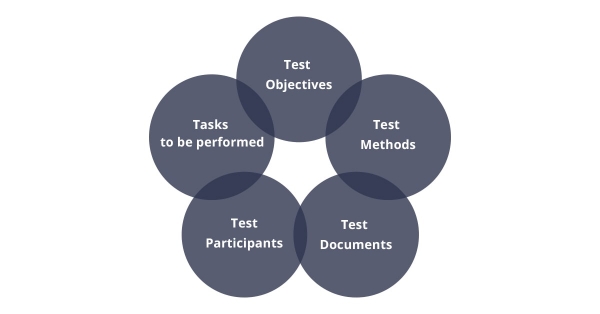Usability testing of a mobile application serves to understand how end-users interact with a product and identify problem areas. The performance data obtained afterward, such as time on task, error-rate, and task success, provide the basis for design improvements.
A typical usability test involves users trying to accomplish typical goals under controlled conditions. Therefore, the core aspect of evaluating app usability is understanding user goals and needs.
In this article, we’ll define the core usability principles and outline the process of usability testing for mobile applications.
What Is Usability of a Mobile App?
The usability of a mobile app defines user satisfaction with it. It boils down to how fast and easily end-users can achieve their goals through the perfectly calibrated user interface, components, and navigation. Good usability requires lots of refining, user research, and intense testing.
Usability is by no means a one-dimensional property. It is rather a combination of factors including the intuitive design that involves understandable architecture and effortless navigation, frequency, and severity of occurred errors, as well as the user’s overall satisfaction with the app.
The list of mobile usability best practices involves the following:
- Strive for simplicity
- Provide a strong architecture based on customer flow
- Consider fragmentation and design for different environments
- Make sure the app design is self-evident and self-explanatory
- Delight people with stunning graphics
- Allow user mistakes and design ways for the user to undo their actions
- Check workflows, navigation, and wording
- Check for consistency
- Test and finetune the app on different devices and platforms
Usability Testing in Mobile App Development Lifecycle
Usability testing can be performed at various development stages. If there is enough of an interface to test, start right away.
Firstly, usability testing during the planning stage allows preventing possible mistakes and helps in the approximation of the actual UX.
When it comes to prototyping, early-phase usability testing is essential as it helps recognize user needs and expectations and, therefore, lowers the risk of failure.
During the building phase, the product is being developed in the real code. In this case, usability testing serves for UX improvements and optimization, as well as risk reduction.
Finally, testing app usability during the maintenance phase is a continuous process that allows keeping the product up-to-date.
How to Test the Usability of a Mobile Application?
The testing process will naturally depend on the specifics of a mobile product under test. The spheres of its implementation can vary from a simple calendar application to a multifunctional product for banks and payment systems.
According to the common test plan designed to check the usability of a mobile application, a tester should usually have:

Regarding the main functions that mobile application should maintain to perform high usability, below are the key capacities to be checked:
- All application buttons should be of proper size, format, and color. Their location should also be considered.
- An application should support the zoom function.
- The keyboard size for entering data should comply with the application itself and with the peculiarities of a mobile device.
- The test fragments should be easily perceived and be readable in terms of location. The user will not scroll down the page continuously in order to read a sentence. Thus, it is better for the sentences to be short and paragraphs - small.
- Special attention should be paid to the text font - it should be of proper size and format.
- The tooltip presence is welcomed - it will help users to figure out all the available functions of a mobile application.
Usability Testing Key Evaluation Measures
- Task completion success rate
- The length of time it takes to complete a task
- Users’ overall feelings about a website throughout the testing process
- Errors made in each task
- The variance between the predefined path to accomplish a task and the one taken by the user
Conclusion
Once you have the usability testing of your app, define necessary improvements and perform re-testing to measure the effectiveness of implemented changes.
New to usability testing? There is a ready-made usability testing checklist that comes in handy to verify the user-friendliness of your product.
